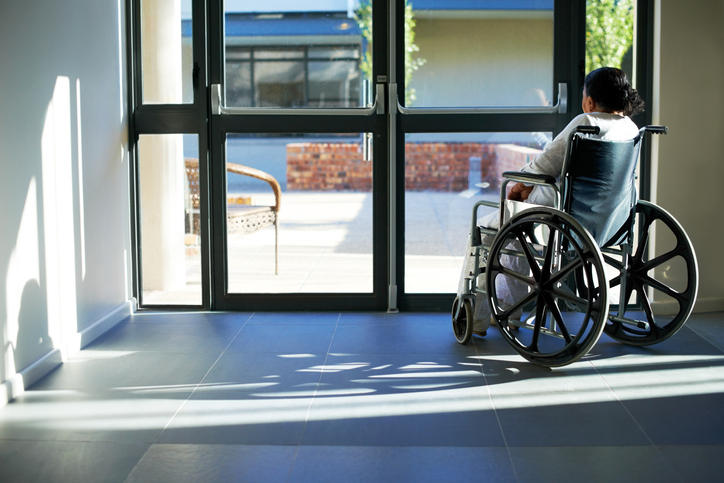Of Connecticut’s 224 nursing homes, 75 percent (168) are being penalized by Medicare based on how often their residents were re-hospitalized within 30 days of discharge. Twenty-five percent (56) in Connecticut are receiving bonuses for having few readmissions, according to a Kaiser Health News (KHN) analysis of data from the Centers for Medicare and Medicaid Services (CMS).

iStock Photo.
In Connecticut, 56 nursing homes will receive Medicare bonuses for having few hospital readmissions.
This is the first time nursing homes are being penalized or rewarded based on how many of their residents are readmitted to hospitals for conditions that could have been prevented. Medicare has administered a similar program for hospitals since the 2013 fiscal year.
The penalties and bonuses, which are in effect for the current federal fiscal year that began Oct. 1, will vary. The top-performing facilities will get about 1.6 percent more for each Medicare resident. The worst-performing facilities will lose almost 2 percent of each resident’s Medicare payment, according to KHN’s analysis.
For-profit homes, which comprise most facilities nationwide, face larger penalties than non-profit or government-owned ones.
Losing part of their Medicare reimbursements may be painful for some nursing homes, said Matthew Barrett, president and CEO of the Connecticut Association of Health Care Facilities, which represents 150 nursing homes in the state. Still, the association supports a “value-based purchasing policy,” he said.
“Connecticut nursing homes are performing well within the national average, with 25 percent of the facilities receiving bonuses, but more must be done,” Barrett said. “We expect many more nursing homes next year, the second year of the program, to receive bonus payments.”
Statewide, the largest penalty levied was a 1.98 percent reduction in reimbursements, and 38 facilities received it. They include: Apple Rehab Laurel Woods, East Haven; Salmon Brook Center, Glastonbury; Milford Health Care Center, Mary Wade Home, New Haven; Lord Chamberlain Manor, Stratford; Notre Dame Convalescent Home, Norwalk; Watrous Nursing Center, Madison; and Valerie Manor in Torrington. (A list of nursing homes receiving the largest penalty in Connecticut is at the bottom of this story.)
The largest bonus awarded in Connecticut, a 1.65 percent increase in reimbursements, is going to Chestelm Health Care, Moodus; Litchfield Woods Health Care Center, Torrington; and Hughes Health and Rehabilitation in West Hartford.
Nursing homes increasingly are acting as short-term rehabilitation facilities and, therefore, play a major role in preventing readmissions, said Lisa Freeman, executive director of the Connecticut Center for Patient Safety. More and more, hospitals are discharging patients earlier than they used to, leading patients to recover in a nursing home setting rather than a hospital.
“[Nursing homes] are taking on much more serious patients. It’s critical that they be directly involved in that whole avoidance-of-readmissions process,” Freeman said. “We can’t simply fault one piece of the puzzle. The real problems are problems that typically involve a number of different things, and communication is a big part of it, always. But we do have to motivate any party that’s involved to provide appropriate aftercare.”
Nationwide, 10,976 nursing homes are being penalized, 3,983 are receiving bonuses, and the rest will see no change in their payments, according to KHN.
Reducing hospital readmissions benefits residents and facilities alike, Barrett noted.
“It’s not just about the money, though avoidable hospital readmissions are costing Medicare billions,” Barrett said. “Preventing readmissions is about providing quality nursing home care. Preventing these events is beneficial to nursing home residents’ physical, emotional and psychological well-being, and it saves scarce health care dollars.”
In many cases, catching a problem early can help avoid a readmission, Freeman said. While it’s unfortunate that “it takes financial motivation to really bring about some good changes,” similar measures taken by Medicare seem to be improving outcomes at some hospitals, she added.
Decreasing readmissions “is definitely doable,” Freeman said, noting the first step is for hospitals not to discharge patients prematurely. “The whole system has to be looked at and fine-tuned a little bit more. It’s not an impossible task.”
Here is the list of nursing homes penalized 1.98 percent: Lord Chamberlain Nursing & Rehabilitation Center, Stratford; The Suffield House; Advanced Center for Nursing & Rehabilitation, New Haven; Sheridan Woods, Bristol; St. Joseph’s Center, Trumbull; Windsor Health and Rehabilitation Center; Apple Rehab Farmington Valley, Plainville; Hewitt Health & Rehabilitation Center, Shelton; Salmon Brook Center, Glastonbury; Milford Health Care Center; Masonicare Health Center, Wallingford; Apple Rehab Guilford; Apple Rehab Watertown and Cassena Care at New Britain.
Also, Parkway Pavilion Health and Rehabilitation Center, Enfield; Golden Hill Rehab Pavilion, Milford; Regalcare at Waterbury; Cheshire Regional Rehab Center; Glendale Center, Naugatuck; Pierce Memorial Baptist Home, Brooklyn; Fairview, Groton; Touchpoints at Manchester; Wilton Meadows Health Center; Essex Meadows Health Center; Mary Wade Home, New Haven and Watrous Nursing Center, Madison.
Also, Valerie Manor, Torrington; Southington Care Center, Abbott Terrace Health Center, Waterbury; Notre Dame Convalescent Home, Norwalk; Meadowbrook of Granby; Woodlake at Tolland; Apple Rehab Laurel Woods, East Haven; Cherry Brook Health Care Center, Collinsville; Apple Rehab West Haven; Lord Chamberlain Manor, Stratford; Bradley Home & Pavilion, Meriden and Springs at Watermark, Southbury.
To look up CMS’ bonuses and penalties levied on nursing facilities click here.
Support Our Work

